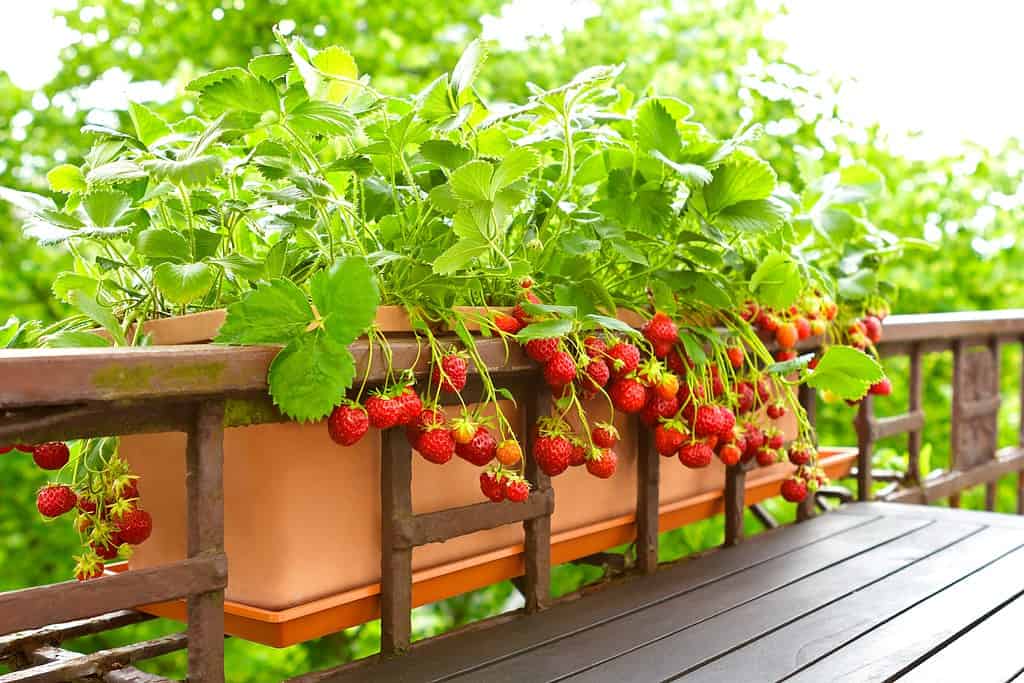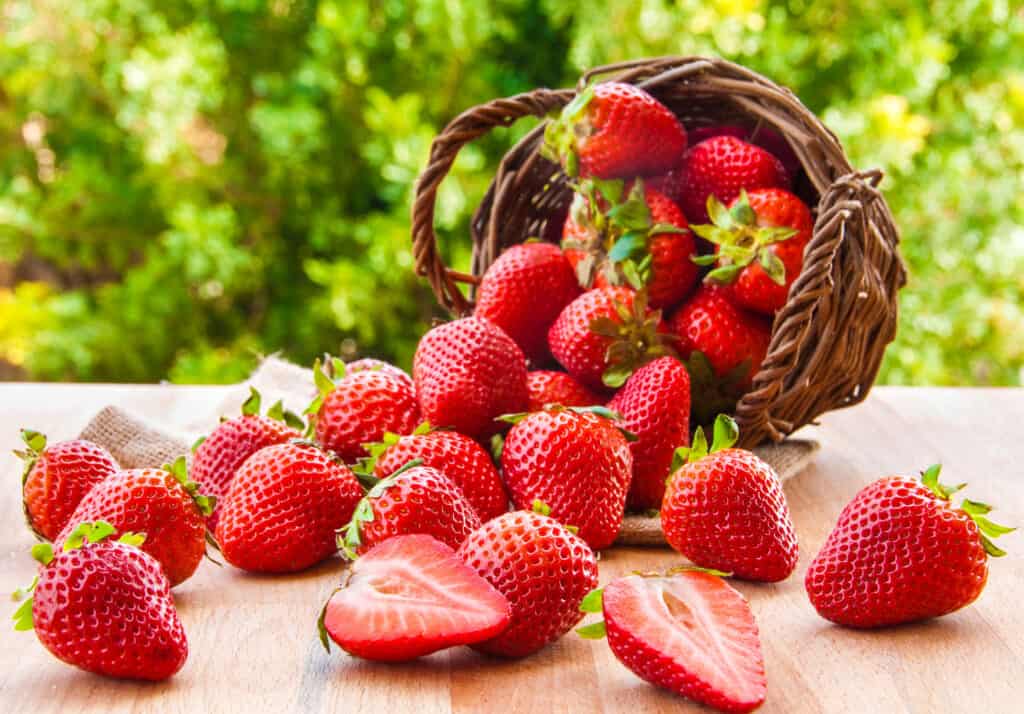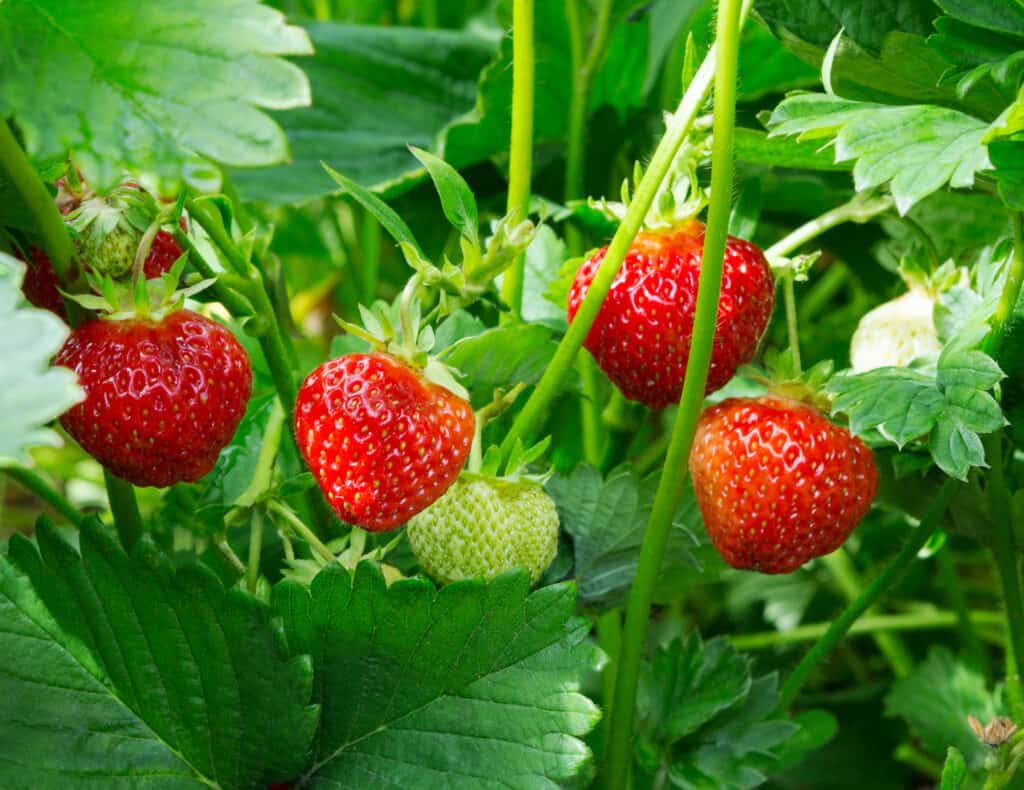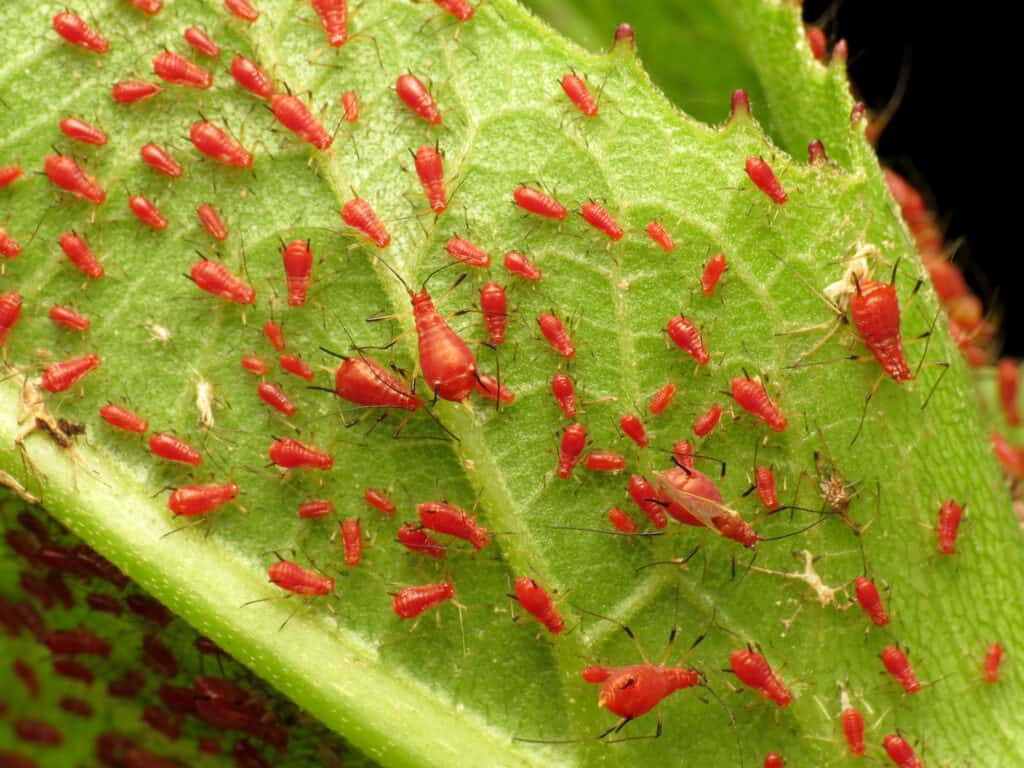Several keys will help you grow the best strawberries in Wisconsin possible. Starting with the right varieties, planting them in the right timeframe and right place, and caring for them properly will all add up. When these are done right, you’ll have a beautiful, delicious harvest of strawberries the whole season.
When is the Best Time to Plant Strawberries in Wisconsin?

Interested in growing strawberries in Wisconsin? Look no further for your seasonal tips and timing information.
©Agenturfotografin/Shutterstock.com
Typically, strawberries in Wisconsin should be planted between April and May. This needs to be after the last threat of frost has passed and the soil has warmed up some.
Some folks may wish to plant strawberry seeds indoors. This isn’t the typical action, but it can be done. Just expect low germination rates and lots of care necessary. If you are going to go with seeds, plant them indoors in later winter or early spring, about 6 to 8 weeks before the last frost is expected for the season.
For nursery-grown strawberries, plant them outdoors in early spring, once the soil has warmed and frost is passed, usually in mid-April.
Where is the Best Place to Plant Strawberries in Wisconsin?
For a healthy, abundant crop of strawberries in Wisconsin, make sure you plant these crop plants in full sun. They need at least 6 hours of direct sunlight minimum, with 10 hours ideal.
You should avoid planting strawberries where raspberries, tomatoes, potatoes, cucumbers, and other melons, peppers, eggplants, or blueberries have formerly grown. These plants often leave behind diseases that kill strawberries in the same soil.
The soil should be well-draining and strawberry plants need protection from the wind. This means avoiding low-lying areas where water collects or exposed areas where the wind could move a spinner on the regular.
What are the Best Varieties of Strawberries to Grow in Wisconsin?

Strawberries are, thankfully, pretty easy to grow in Wisconsin. Check out these easy-to-follow tips to learn how.
©iStock.com/MariaUspenskaya
Thankfully, many varieties and cultivars of strawberries thrive in Wisconsin. You’ll find that June-bearing, ever-bearing, and day-neutral varieties alike will do well here. Some of the best varieties include these favorites:
- Crimson King
- Fort Laramie
- Ogallala
- Ozark Beauty
- Earliglow
- Honeoye
- Allstar
- Albion
- Tribute
- Chandler
- Jewel
- Seascape
When Are Strawberries Ready to Harvest in Wisconsin?
The variety of strawberries will determine the timeline for harvest-ready fruit. But several indicators tell you when that time has come.
- Ripe fruit is evenly colored red. If they have any green or white on the fruit, they’re not ready yet. And strawberries don’t ripen after picking, so don’t pick them now. Wait for that even coloring.
- Strawberries are firm to the touch when they’re ready to pluck from the plant. This means you shouldn’t wait until they’re squishy or deep red to pick them. They also shouldn’t be hard. If they’re hard, they’re not ripe yet.
- Unless you’re working with a dwarf variety of strawberries (read: wild), strawberries will be about 1 to 1.5 inches in size when they’re ready to pick.
10 Helpful Hints for Growing Strawberries in Wisconsin

Strawberries in Wisconsin are fairly easy to grow, as long as you prepare the soil properly and provide them with appropriate care.
©iStock.com/romiri
As you venture into your strawberry growing season, these tips will help you plant and grow healthy fruit for years to come.
1. Prepare the Soil Before Planting
One of the key things in growing healthy strawberries in Wisconsin is the right soil. That means preparing the soil ahead of planting will provide you with the healthiest plants, the sweetest berries, and the biggest harvests.
Start this preparation by removing any weeds and debris. Strawberries like their soil rich in organic matter, with a pH of 6.0 to 6.5. So, amend the soil with this organic material and work with lime to raise the pH levels if the soil is too acidic.
2. Plant Your Strawberries in the Ground for Best Results
While many folks like those cute little strawberry pots, the plants actually do better when directly planted in the ground. Bed planting allows the strawberries to expand and grow comfortably without cramped quarters for their roots. This also allows the plants to put out more runners for more strawberry plants.
3. Plant Your Strawberries 12 to 18 Inches Apart
Strawberries do best when planted between 12 and 18 inches apart. The rows should be 2 to 3 feet apart. This allows the plants to grow and mature and spread out for their best life.
4. Water Your Strawberries Regularly

Be sure to water your strawberry plants weekly with deep root watering.
©iStock.com/Tgordievskaya
Strawberries in Wisconsin, like anywhere, require regular watering. This is especially true during dry, hot periods. Water the plants deeply once per week, with at least one inch of water. Avoid overhead watering, as this leads to fungal diseases. Instead, water directly into the soil.
You should also take care not to over-water, as this may result in root rot and the death of your plants.
5. Fertilize Your Strawberries Carefully
A balanced fertilizer, like 10-10-10, should be applied to the strawberries every four to six weeks during the growing season. This encourages growth and healthy fruits. However, it’s important to ensure you don’t over-fertilize. Too much of a good thing will result in more vegetation and less and poorer quality fruit.
6. Mulch Your Strawberries in Wisconsin
Mulch helps the soil retain moisture for your strawberry plants. It also helps regulate soil temperature and keep weeds away.
Each spring, mulch your strawberry plants with new, fresh organic mulch like straw, pine needles or even grass clippings and shredded leaves. Maintain a layer of mulch between 2 and 3 inches deep. When it comes time to winterize, remove the old mulch and add a fresh layer.
7. Propagate Your Strawberries by Cutting Off the Runners
Cutting off the runners that strawberry plants put out allows you to propagate new plants. Simply cut them off from the parent plants and plant the runners in a new location. Voila! New strawberry plants that keep the fruit coming year after year.
8. Deal With Pests Appropriately and Safely

Strawberry plants may be infested with aphids or other insects. Your best bet is a natural pesticide for healthy strawberry plants.
Unfortunately, strawberries in Wisconsin may be prone to several pests and diseases. These include powdery mildew, slugs, spider mites, and aphids most commonly.
Prevent these issues by regularly inspecting your plants. Remove any diseased or damaged leaves or fruit. Then gently wash the plant with organic herbicide as needed. For insects like spider mites and aphids, you may need to manually remove these with gloved hands. You can also find organic sprays or make your own to get rid of them and help prevent further infestation.
Note: While some folks suggest using any pesticide or herbicide, you really don’t want to. Using organic sprays and homemade solutions is best because you’re eating the strawberries. Chemicals aren’t healthy to consume.
9. Cut Back Your Strawberries for Winter
When wintertime approaches, cut back the strawberry plants for preparations. This means you should remove any dead or damaged leaves and decaying fruit.
10. Winterize Your Strawberries for Next Year
When the season is over and the weather starts to cool, it’s time to winterize. Make sure you cover the plants with a layer of straw or organic mulch before the first frost hits. Then, when spring hits (and the final frost has passed), uncover the plants and prune them before re-mulching.
Thank you for reading! Have some feedback for us? Contact the AZ Animals editorial team.








